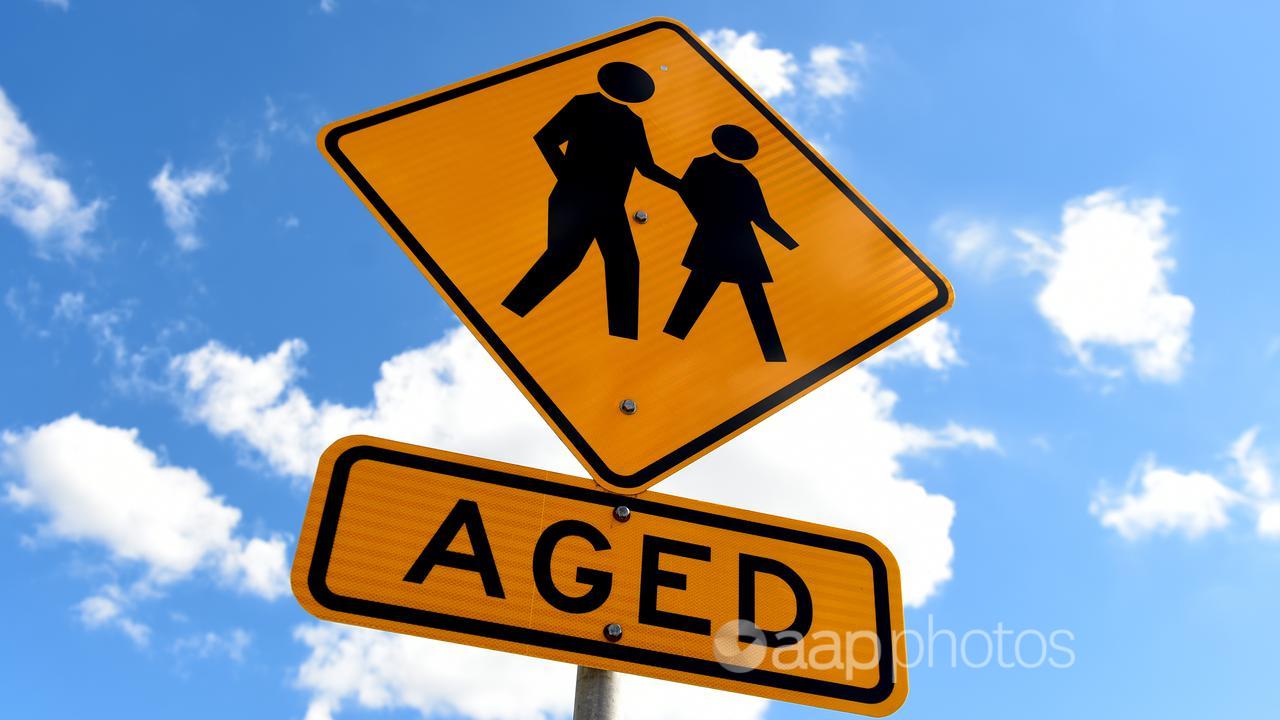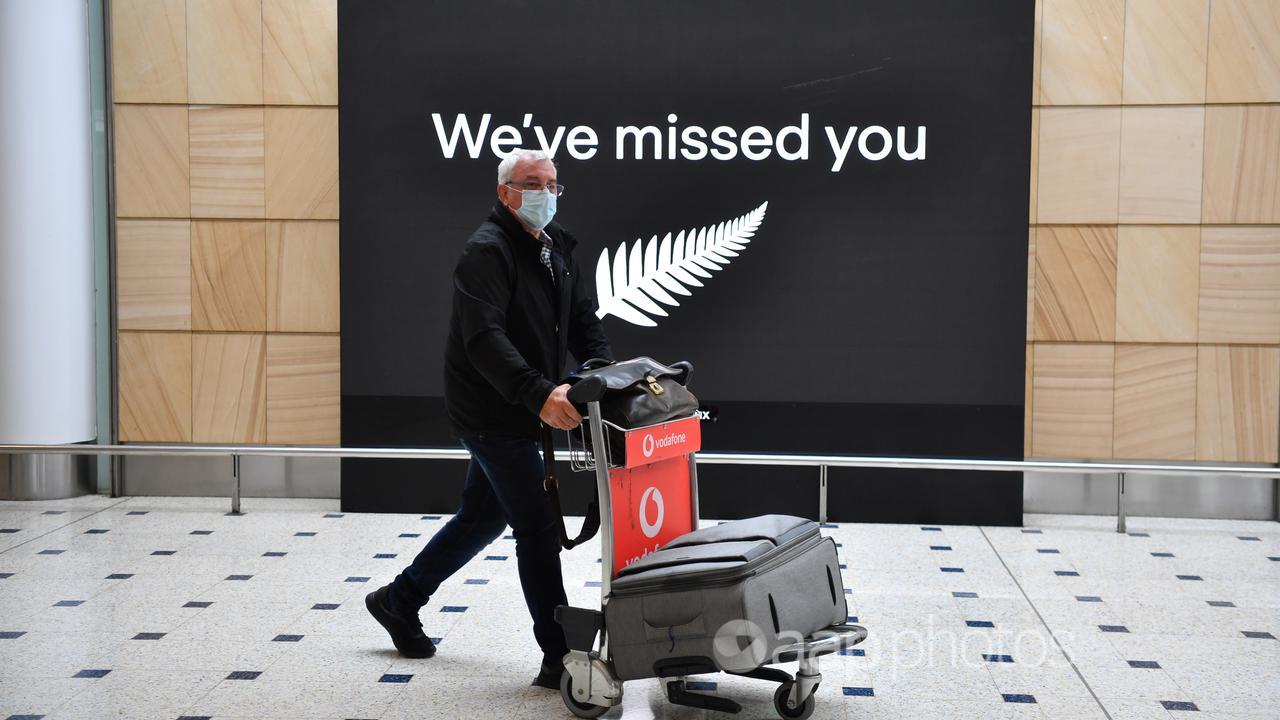Social media users claim excess deaths in New Zealand increased by 3203 per cent from 2020 to 2022 due to COVID vaccinations.
This is false. Experts told AAP FactCheck this figure is based on a “nonsensical calculation” and vaccines have not contributed to a rise in excess deaths – fatalities above the usual number during a particular period.
Experts calculated the actual increase in 2022 compared to recent years as about 17 per cent, due in part to the COVID-19 virus itself, New Zealand’s ageing population and delayed healthcare during the pandemic.
The claim was made in an article published by The Exposé, a UK-based website which spreads COVID-19 and vaccine misinformation.
The article has been shared widely on social media, as seen here, here, here, here, here and here.
Many posts include a meme using the article’s headline: “Jacinda Ardern’s COVID Dictatorship caused a 3203% increase in Excess Deaths following her Mandatory COVID Vaccination Laws”.

“The island suffered 2169 excess deaths in 2021 and then a shocking 5286 excess deaths by week 49 of 2022,” the article states.
“Especially when compared to 2020, when no excess deaths were suffered and 160 fewer deaths were actually recorded than expected at the height of the Covid pandemic and prior to the rollout of the Covid injections.
“This means New Zealand suffered a shocking 3203 per cent increase in excess deaths in 49 weeks throughout 2022 compared to 53 weeks throughout 2020.
“Instead of reducing deaths, COVID vaccination has increased deaths exponentially.”
The figures are based on Organisation for Economic Co-operation and Development (OECD) data, which shows -159.8 excess deaths in 2020 and 5288.6 for the first 49 weeks of 2022.
The dataset also provides figures for all 52 weeks of 2022, with a total of 5658.2 excess deaths. The OECD notes recent weekly figures are subject to revision, which may explain discrepancy in the numbers.
It is unclear exactly how The Exposé reached the 3203 per cent figure, but experts said it appeared the publication subtracted 160 from 5286, divided by 160 and multiplied by 100 to calculate the percentage increase.

Experts told AAP FactCheck the figure is way off the mark.
Michael Plank, a professor in the school of mathematics and statistics at the University of Canterbury, said it was “completely incorrect to say that excess deaths increased by 3203 per cent.”
“The author appears to have divided the number of excess deaths in 2022 (5285.6) by the number in 2020 (-159.8), but has ignored the fact that 2020 excess deaths were negative,” he told AAP FactCheck in an email. “This is a completely nonsensical calculation mathematically.”
James Trauer, an associate professor in biostatistics at Monash University, said there were many mathematical issues with the calculation. He described calculating the percentage increase between two estimates of excess deaths was “almost completely meaningless”.
Professor Plank said excess deaths were best reported as a percentage of expected deaths.
Excess deaths is a measure of how many more deaths occurred compared to the average number of deaths recorded over the 2015-2019 five-year period.
“In this case, estimated excess deaths changed from -0.5 per cent in 2020 (32521 actual deaths compared to 32681 expected) to 17.3 per cent in 2022 (38339 actual compared to 32681 expected) according to the OECD figures,” Prof Plank said.
Kevin McConway, an emeritus professor of applied statistics at The Open University, agreed.
“I’d compare the actual number of deaths in each year with the average number that occurred in the 5 years 2015-2019. … What you find is that for 2020, the actual number of deaths was about half of one per cent below the 5-year average (so pretty well average), while for the first 49 weeks of 2022, the actual number was about 17 per cent above the 5-year average,” Professor McConway told AAP FactCheck in an email.

However, the OECD data doesn’t account for New Zealand’s growing ageing population.
A methodological note states: “This baseline could be considered a lower estimate of the expected number of deaths since both population growth and an ageing population would be expected to push up the number of deaths observed each year. For example, New Zealand saw its population grow by around 9 per cent since 2015, with the number of people aged 65 and over increasing by 18 per cent.”
Prof Plank said this meant “you would expect more deaths even if nothing else had changed”.
Stats NZ provides data for excess deaths against projected deaths, which takes into account future fertility, mortality, and migration patterns.
“Data from our 2016-base projections suggest that in 2020, there were projected to be 32,400 deaths. In reality, there were 32,613 deaths,” Stats NZ insights analyst Rebekah Hennessey told AAP FactCheck in an email.
“For 2022, we projected 34,500 deaths; in reality, for the Sept 2022 year, there was 38,052 deaths – or around 3550 more deaths than projected.”
Using these figures, excess deaths increased by 0.7 per cent in 2020 and 10 per cent in 2022 compared to projected deaths.
Ms Hennessey said Stats NZ used date of registration when publishing most deaths data, while the OECD used date of occurrence. This can cause a small difference in total counts between the two datasets.

While New Zealand did record a higher number of excess deaths in 2022 compared to 2020, experts said this was not due COVID-19 vaccination.
Dr Trauer said the increase was entirely expected, driven by population growth, population ageing and COVID-19 itself.
“In fact, New Zealand administered its greatest number of vaccinations in 2021 and had its biggest COVID epidemic in 2022, so the pattern of deaths presented in this article is really evidence against the point they are trying to make,” he said.
Prof Plank also noted travel restrictions and social distancing throughout 2020 reduced the number of deaths from flu and other respiratory diseases.
“Whereas in 2022 COVID-19 caused a significant number of deaths, and the pandemic has also had knock-on effects such as delayed healthcare, which could have indirectly led to other deaths,” he said.
“New Zealand has suffered fewer excess deaths during the pandemic than just about any other country in the world. The reason is simple: the vast majority of the population were vaccinated before being exposed to COVID-19.”
AAP FactCheck has previously addressed claims made by The Exposé here, here, here, here, here and here.
The Verdict
The claim COVID-19 vaccinations caused excess deaths in New Zealand to increase by 3203 per cent from 2020 to 2022 is false. Experts told AAP FactCheck the method used to calculate this “meaningless” figure is “nonsensical”.
Based on OECD data, excess deaths increased from -0.5 per cent in 2020 to 17.3 per cent in 2022. This is in comparison to the average number of deaths from recent years. When using Stats NZ figures, which take into account future fertility, mortality, and migration patterns, the increase was from 0.7 per cent to 10 per cent.
Experts say the increase was due to the COVID-19 virus, an ageing population and delayed access to healthcare, not vaccinations.
False – The claim is inaccurate.
* AAP FactCheck is an accredited member of the International Fact-Checking Network. To keep up with our latest fact checks, follow us on Facebook, Twitter and Instagram.
All information, text and images included on the AAP Websites is for personal use only and may not be re-written, copied, re-sold or re-distributed, framed, linked, shared onto social media or otherwise used whether for compensation of any kind or not, unless you have the prior written permission of AAP. For more information, please refer to our standard terms and conditions.


















